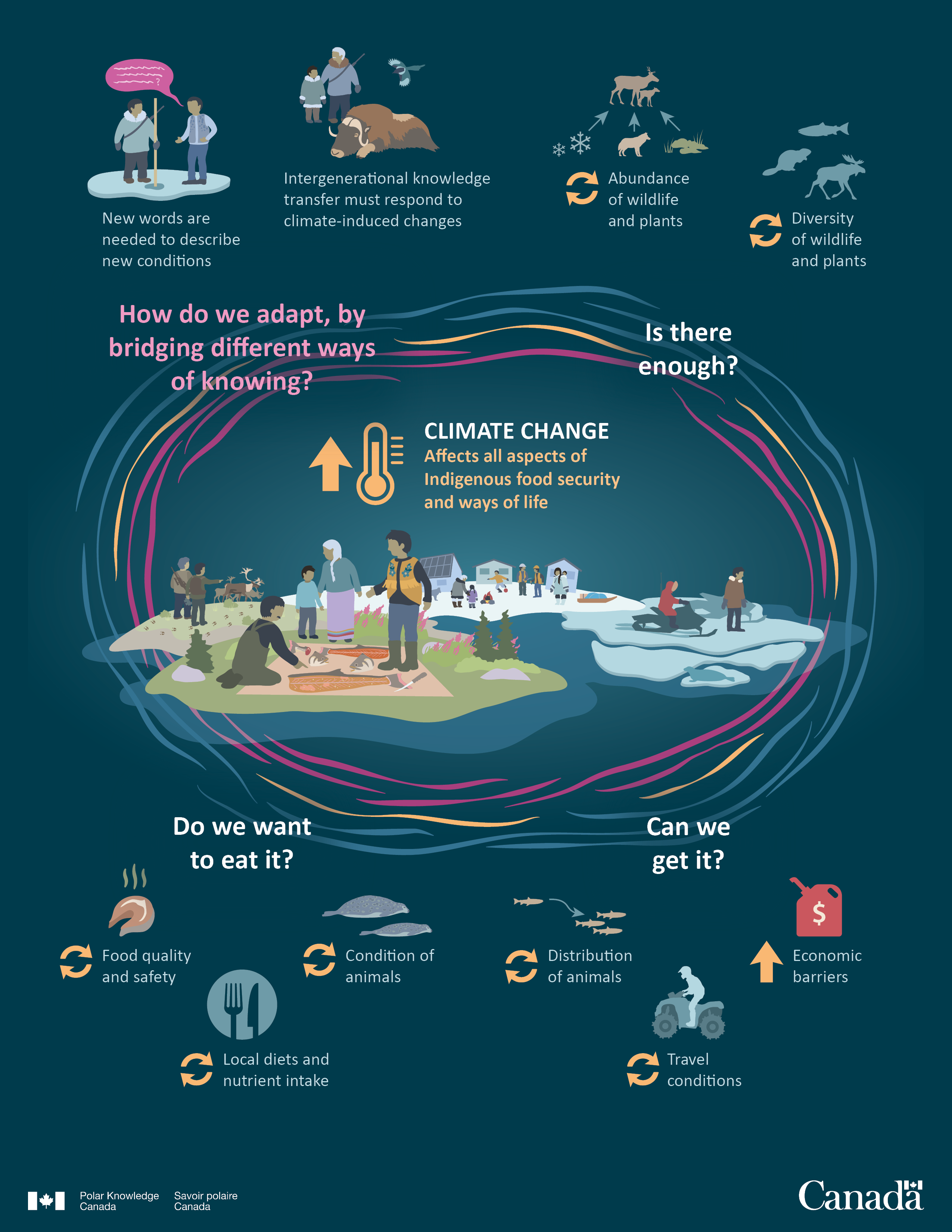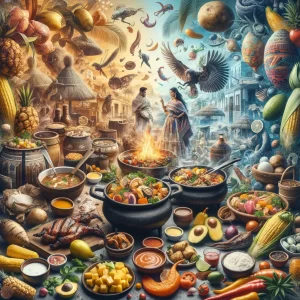Indigenous cuisine represents more than mere sustenance; it serves as a vibrant expression of culture, tradition, and the environment, embodying the essence of food systems and cultural heritage.
This article examines the unique characteristics of indigenous cuisine and its relationship with climate. From the traditional Inuit dishes of the Arctic to the rich flavors inherent in Maori cuisine in New Zealand, as well as the diverse offerings from Amazonian communities, we explore how local climates influence ingredient availability, cooking methods, and the culinary identities of these communities, highlighting the role of indigenous knowledge and food sovereignty.
Furthermore, we address the challenges posed by climate change to these culinary traditions and the efforts being implemented to preserve them, emphasizing sustainability practices and the importance of environmental stewardship. This exploration invites readers to delve into the world of indigenous foods and their profound connection to the land.
What is Indigenous Cuisine?
.jpg_00.jpeg)
Indigenous cuisine embodies a rich tapestry of culinary traditions that are deeply rooted in the unique cultural heritage of indigenous communities worldwide, reflecting traditional recipes and ecological practices. It is often characterized by a profound connection to local agriculture, native plants, and food sources that have been nurtured over centuries.
These traditional recipes not only emphasize regional flavors but also encompass a diverse array of cooking methods that reflect the community’s commitment to environmental stewardship and biodiversity conservation, integrating climate-responsive practices and sustainable methods.
The incorporation of seasonal ingredients and wild edibles illustrates the adaptability and resilience of indigenous peoples in preserving their culinary identity in the face of changing landscapes and climatic conditions, exemplifying indigenous rights and environmental impact.
What are the Key Characteristics of Indigenous Cuisine?
The key characteristics of indigenous cuisine are often deeply rooted in the community’s historical relationship with their environment, which shapes their culinary identity through the application of traditional knowledge, local ingredients, and distinctive flavor profiles. This cuisine encompasses a variety of cooking methods and places significant emphasis on food preservation techniques, seasonal harvesting, and the utilization of native plants, all of which contribute to the richness of culinary practices across diverse cultures.
Ethical foraging serves as a fundamental principle, guiding communities in the selection of resources that are abundant while ensuring sustainable practices are upheld, aligning with food ethics and indigenous gastronomy principles. Hunting practices are frequently imbued with ritual significance, fostering a connection between the hunter, ancestral traditions, and the land itself, emphasizing food rituals and indigenous rights. Similarly, fishing techniques are adapted to local ecosystems, whether through the use of nets, traps, or line fishing, reflecting the community’s profound understanding of aquatic environments and climate influence on local flora and fauna.
These practices not only guarantee a reliable food supply but also cultivate a deep respect for the land and water, illustrating the unique relationship that exists between people and their natural surroundings, fostering community engagement and food networks. The diversity in sourcing food enhances adaptability and resilience, showcasing the profound wisdom embedded within indigenous culinary traditions, reflecting climate feedback and nutritional diversity.
How Does Climate Affect Indigenous Cuisine?
Climate serves as a pivotal factor that impacts indigenous cuisine, influencing various aspects, including the availability and types of food sources, as well as the methods utilized in food preparation and preservation.
Variations in temperature, alterations in rainfall patterns, and shifts in soil fertility directly affect local ecosystems, subsequently shaping the biodiversity of food options accessible to indigenous communities, highlighting plant cultivation and environmental sustainability.
As these environmental factors change, indigenous peoples frequently find it necessary to adapt their culinary practices in order to preserve their cultural expressions and ensure food security, emphasizing climate resilience and indigenous gastronomy. This adaptability reflects their resilience in the face of environmental challenges, showcasing climate feedback and eco-cultural practices.
What are the Types of Climates that Influence Indigenous Cuisine?
Different types of climates, ranging from arctic tundras to tropical rainforests, significantly influence the regional dishes and culinary practices of indigenous peoples, showcasing food identity and cultural expressions. These climatic conditions shape their dietary habits and food choices, taking into account the unique characteristics of their environments.
For example, communities in arctic regions primarily depend on hunting practices and the utilization of wild game, whereas those in tropical regions focus on diverse agricultural practices that capitalize on the abundant biodiversity in their surroundings, reflecting indigenous agriculture and culinary heritage.
In temperate zones, indigenous peoples typically employ a combination of farming and foraging, incorporating seasonal fruits and vegetables into their diets, which reflects their adaptive strategies for utilizing natural resources. The reliance on native species not only enhances their culinary heritage but also plays a crucial role in habitat preservation, emphasizing agroecology and heritage foods.
As these communities confront the challenges posed by climate change, they continue to honor traditional recipes while integrating modern techniques and sustainable practices, ensuring climate adaptation and culinary diversity. This approach ensures the longevity of both their cuisine and the ecosystems in which they thrive.
Consequently, the narratives surrounding these dishes often underscore the profound connection between food, culture, and the environment, highlighting cross-cultural exchanges and food landscapes.
How Does Climate Affect the Availability of Ingredients?
The availability of ingredients in indigenous cuisine is intrinsically linked to climate conditions, with seasonal ingredients playing a crucial role in determining the harvestable and foraged items throughout the year, emphasizing climate variability and climate zones.
These climate-related variations can significantly impact local ecosystems, making it essential for communities to comprehend the complex relationships between weather patterns, plant growth cycles, and animal behaviors.
For example, as temperatures increase or rainfall becomes less predictable, the timing and quantity of wild edible plants and animals can change, posing challenges for those who rely on these natural resources, highlighting climate adaptation and resource management.
Indigenous peoples, drawing on their extensive knowledge, implement innovative practices such as rotational harvesting and controlled burns, allowing them to adapt effectively while maintaining biodiversity and ecological balance, supporting climate-responsive practices and food ethics.
By nurturing resilient ecosystems, they not only secure their own survival but also preserve the rich cultural heritage that is intertwined with their culinary traditions, promoting food production and cultural practices.
How Does Climate Influence Cooking Techniques and Methods?
.jpg_01.jpeg)
Climate significantly influences cooking techniques and methods in indigenous cuisine by determining how food is prepared, preserved, and cooked in accordance with environmental factors such as temperature, humidity, and resource availability.
For example, in arid climates, indigenous populations may employ specific food preservation techniques to ensure the longevity of their provisions, whereas communities in wetter regions might adopt fermentation methods to enhance flavors and nutritional value.
These varied practices not only highlight distinct culinary skills but also reflect a profound cultural heritage and adaptability to local conditions, emphasizing cultural expressions and food storytelling. In the Arctic, traditional food preparation often involves techniques such as freezing or drying fish and meat, which are essential for sustenance during harsh winter months.
In contrast, tropical communities typically utilize methods like smoking and sun-drying to mitigate the effects of humidity and prevent spoilage, showcasing holistic approaches and land stewardship.
Each technique, whether it be roasting over open flames, slow-cooking in earth ovens, or utilizing natural refrigeration, demonstrates an intimate understanding of the local ecosystem and underscores the principles of sustainability and resourcefulness that are critical for survival, reflecting indigenous agriculture and environmental impact.
Examples of Indigenous Cuisines Shaped by Climate
Numerous indigenous cuisines across the globe have been distinctly influenced by their respective climatic conditions, leading to a rich diversity of culinary expressions that reflect local agricultural practices, cultural heritage, and ecological diversity, incorporating agroecology and food culture.
For instance, Inuit cuisine in the Arctic highlights the reliance on wild game and foraged foods, whereas Maori cuisine in New Zealand features unique seafood and plant-based diets shaped by temperate climate zones, emphasizing culinary heritage and sustainability.
1. Inuit Cuisine in the Arctic
Inuit cuisine in the Arctic is fundamentally dependent on wild game and marine resources, which reflect the challenging climatic conditions and the traditional hunting practices that have been transmitted across generations, highlighting the role of migratory patterns and ancestral lands. This cuisine prioritizes sustainability by utilizing every part of the animal and employing unique cooking methods that emphasize the flavors and nutritional values of their food sources.
Hunting techniques are essential, with practices such as seal hunting, caribou herding, and fishing being deeply embedded in local culture, demonstrating food identity and resource management. Seasonal changes significantly affect these food practices, as certain game becomes more plentiful during specific times of the year, thereby influencing the community’s dietary habits.
For example, during the summer months, the focus shifts toward fishing, while winter may see an increase in hunting migratory birds and seals, highlighting the importance of nutritional diversity and seasonal harvesting. The ecological impact of these practices is carefully assessed, as there is a strong commitment to sustainable methods that ensure the preservation of both animal populations and natural habitats, promoting climate resilience and environmental sustainability.
Food preservation techniques, including drying and freezing, are critical in enabling the Inuit to store food for the extended winters, thus ensuring a reliable food supply throughout the year and supporting food security and community resilience.
2. Maori Cuisine in New Zealand
Maori cuisine in New Zealand is distinguished by its extensive use of seafood and seasonal ingredients, influenced by the country’s temperate climate and abundant natural resources. Traditional recipes frequently incorporate elements of local agriculture and foraging practices, reflecting the community’s profound connection to both the land and the sea, which includes indigenous knowledge and biodiversity conservation.
The culinary traditions extend beyond mere sustenance; they encompass a holistic understanding of nature and its cycles, integrating eco-cultural practices and sustainability. Signature dishes, such as Hangi—where food is prepared in an earth oven—exemplify a unique fusion of flavors and techniques that have been passed down through generations.
The incorporation of shellfish, fish, and game, along with foraged greens and native herbs, highlights the significance of local ecosystems in shaping dietary practices, rooted in indigenous agriculture and traditional meals. This relationship promotes a sustainable approach to food sourcing, ensuring that Maori cuisine remains deeply intertwined with the identity and heritage of its people.
Ultimately, it celebrates their history while fostering environmental stewardship.
3. Amazonian Cuisine in South America
Amazonian cuisine in South America presents a diverse array of ingredients and flavors that are influenced by the region’s rich biodiversity and tropical climate. Indigenous communities employ traditional knowledge systems to source their food, often relying on local agriculture, wild edibles, and pescatarian practices that reflect their ecological awareness and sustainability practices.
This culinary landscape is further enhanced by distinctive cooking techniques, such as steaming food in leaves, which not only amplifies the natural flavors but also preserves essential nutrients, highlighting the importance of food preservation techniques. Community gatherings frequently revolve around food preparation, cultivating a sense of belonging and shared cultural heritage as families and friends unite to celebrate harvests or special occasions.
These communal feasts extend beyond mere sustenance; they embody principles of food sovereignty, emphasizing self-sufficiency and the significance of preserving traditional methods in an increasingly globalized world. Through these practices, indigenous peoples maintain their connection to the land, ensuring that their culinary traditions, including food rituals and spirituality, are sustained for future generations.
How Has Climate Change Impacted Indigenous Cuisine?
.jpg_10.jpeg)
Climate change presents substantial challenges to indigenous cuisine, as alterations in environmental conditions directly impact food security, the availability of traditional ingredients, and culinary practices across diverse regions. These changes necessitate climate adaptation and climate resilience strategies to protect food systems.
Indigenous communities are increasingly compelled to adapt their food systems to address the effects of a changing climate, which poses risks to their cultural heritage and traditional knowledge pertaining to food preparation and resource management, including challenges such as climate variability and shifts in temperature and precipitation patterns.
What are the Challenges Faced by Indigenous Communities due to Climate Change?
Indigenous communities are confronted with numerous challenges attributable to climate change, which jeopardizes their traditional ways of life, food security, and resource management practices. The effects of rising temperatures, shifting rainfall patterns, and declining biodiversity have led to reduced access to traditional food sources, thereby complicating efforts to preserve their culinary heritage and food identity.
The decline in biodiversity disrupts the ecosystems upon which these communities depend for hunting and foraging, resulting in a decrease in the availability of essential resources. Additionally, the alteration of wildlife migratory patterns, driven by climatic variations, further complicates hunting practices and compels communities to adapt to new and often less sustainable alternatives, impacting traditional agriculture and food storytelling.
Moreover, traditional agricultural practices are facing significant disruptions as changing climatic conditions render previously fertile lands unproductive. Consequently, the fundamental concept of food sovereignty becomes increasingly critical for these communities, underscoring their struggle to maintain control over their food systems in the face of environmental challenges, such as climate feedback and soil quality degradation.
What are the Efforts Being Made to Preserve Indigenous Cuisine?
Efforts to preserve indigenous cuisine are essential for maintaining cultural identity and promoting food sovereignty in the face of challenges brought about by climate change and modernization. These efforts include the preservation of culinary diversity and the revitalization of traditional recipes.
These initiatives typically involve the documentation of traditional recipes, the promotion of local markets, and the revival of culinary tourism that honors indigenous gastronomy and its relationship with community traditions and ecological diversity, fostering community resilience and regional flavors.
Numerous organizations are leading educational programs aimed at teaching younger generations about their culinary heritage, instilling a sense of pride and knowledge that enables them to continue these practices, emphasizing the importance of nutritional diversity and food networks.
Community gatherings, such as local food festivals and cooking workshops, provide platforms for knowledge sharing and collaboration, thereby strengthening social connections and encouraging sustainable food practices, including plant-based diets and cooking methods.
By integrating traditional food practices with contemporary approaches, these initiatives not only safeguard indigenous cultural expressions but also promote environmentally sustainable agriculture, ensuring that these rich culinary legacies, rooted in ancestral lands and land stewardship, are preserved for future generations.
Frequently Asked Questions
What is the relationship between climate and cuisine in Indigenous communities?
The climate in a particular region can heavily influence the types of foods that are available and the way they are prepared, which in turn shapes the cuisine of Indigenous communities, highlighting the role of climate-responsive practices and climate zones.
How does the availability of ingredients vary in different climates?
.jpg_11.jpeg)
In colder climates, for example, there may be a scarcity of fresh fruits and vegetables, resulting in a heavier reliance on preserved and dried foods, utilizing fermentation and preservation techniques. In warmer, tropical climates, there may be an abundance of fruits and vegetables, leading to a more plant-based diet.
How does traditional knowledge play a role in shaping Indigenous cuisine?
Indigenous communities have a deep understanding of their local ecosystems and have developed traditional methods of harvesting, preparing, and cooking foods that are well-suited to their specific climate and environment, incorporating ethnobotany and agroecology.
What are some examples of how climate shapes Indigenous cuisine?
In colder climates, such as the Arctic, fish and seal meat are often staples due to the availability of these protein sources, relying on marine resources. In warmer climates, like the Amazon rainforest, fruits and vegetables are a large part of the diet, as part of indigenous agroecology.
How does climate change impact the cuisine of Indigenous communities?
As the climate continues to change, traditional food sources and preparation methods may become less viable, leading to changes in the cuisine of Indigenous communities. This can also affect cultural practices and traditional knowledge passed down through generations, impacting local traditions and food ethics.
How can we support and celebrate the unique relationship between climate and Indigenous cuisine?
One way is to learn about and appreciate the traditional foods and preparation methods of Indigenous communities and to support sustainable and environmentally-friendly practices, promoting climate influence and cross-cultural exchanges, that preserve these important food systems.

My name is Bruno, I have been a writer for 5 years and I work with website creation. My goal is to provide true information to readers. In fact, on this site I write about cultures and traditions, which I have been passionate about since childhood.




